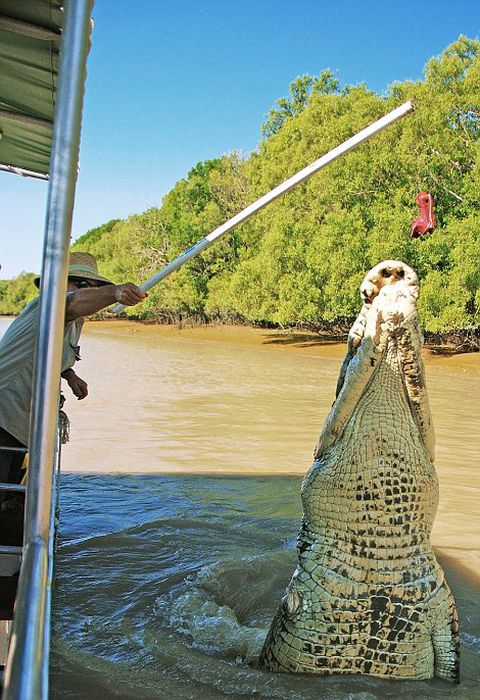|
|
Brutus, The Giant Crocodile
|
A (further) corrupted form cocodrille is found in Old French and was borrowed into Middle English as cocodril(le). The Modern English form crocodile was adapted directly from the Classical Latin crocodīlus in the 16th Century, replacing the earlier form.
The use of -y- in the scientific name Crocodylus (and forms derived from it) is a corruption introduced by Laurenti (1768).
Crocodiles are among the more biologically complex reptiles despite their prehistoric look. Unlike other reptiles, they have a cerebral cortex; a four-chambered heart; and the functional equivalent of a diaphragm, by incorporating muscles used for aquatic locomotion into respiration (e.g. M. diaphragmaticus); Their external morphology on the other hand is a sign of their aquatic and predatory lifestyle. A crocodile’s physical traits allow it to be a successful predator. They have a streamlined body that enables them to swim swiftly. Crocodiles also tuck their feet to their sides while swimming, which makes them faster by decreasing water resistance. They have webbed feet which, although not used to propel the animal through the water, allow it to make fast turns and sudden moves in the water or initiate swimming. Webbed feet are an advantage in shallower water where the animals sometimes move around by walking.
|
|









